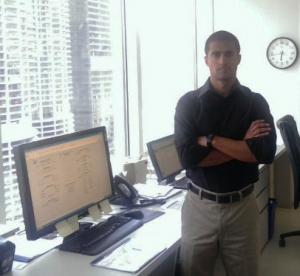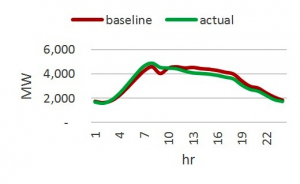As a city sitting virtually at sea level, Miami has been called ground zero for the problems posed by climate change, a place where rising sea levels threaten its future existence.
The latest forecast of sea level rise from the Intergovernmental Panel on Climate Change, for example, predicts that by later this century, global sea levels will be two feet higher than they are today, quite possibly higher. Under that scenario, the nuisance flooding in Miami that periodically comes with high tides will be a daily affair, the storm surge impact of hurricanes will be amplified, and lower-lying areas of the city will be uninhabitable. That’s actually not the worst of it: Under higher sea levels, the Biscayne Aquifer—where southeast Florida draws its drinking water—will increasingly suffer from saltwater intrusion, a problem for which there is no foreseen solution other than the investment of billions of dollars in water treatment facilities.
As bleak as this future would seem to be, few with real skin in the game in Miami—residents, real estate investors, and companies—are backing away from long-term investment. Exhibit A: Miami has been undergoing a nearly unprecedented surge in real estate construction, with planning discussions centering less on who will leave first and more on how high new projects can be built. Among the projects under way, for example, is an 80-plus-story behemoth in Brickell Center, the city’s urban core. If Miami is on the verge of being a modern-day Atlantis, those who would have the most to lose are apparently not buying it.
Why this apparent deafness to the dire warnings? Well, here’s a paradox. If one talks to developers and city commissioners in the area, it’s hard to find evidence of overt denial of current and future risk; Miami was a city, after all, almost completely destroyed by a hurricane in 1926, and most concede that a recurrence is a matter of when, not whether. Likewise, few deny that the city’s unique geography makes it vulnerable to the effects of rising sea levels. It’s a long-term problem that the planning commissions of Miami and Miami Beach acknowledge exists and threatens to get worse.
Where locals disagree with outsiders, however, is about how best to deal with the problem. Rather than sounding alarms and cutting back on development, there’s an implicit sense that the best approach may be, ironically, to do the opposite. And while a strong case can be made that this behavior has no rational basis, it may represent Miami’s best long-term hope for dealing with the threats posed by climate change, one that other cities might be advised to mimic: The best strategy, in fact, may be to foster a collective belief that there’s no threat—or at least not one serious enough to lose sleep over.
Before an explanation why, let’s first address the two standard explanations for the building boom, explanations that are indeed part of the puzzle. The first is that real estate developers, by their nature, are gamblers with short planning horizons. In the late 2000s, the real estate and equities crash quickly wiped out many builders. One might assume that would have made them skittish. To the contrary, the quick recovery that followed taught most that big risks are worth taking, and are survivable. While developers today may concede that sea levels are rising, it’s a risk that lies well beyond their investment horizons, and in any case is dwarfed by the more immediate risk of a returning recession.
The second explanation is that many of the buyers for all the new condo units are cash investors from Latin America, and the risks of Miami real estate—overdevelopment, speculation, environmental unsustainability—remain small relative to similar investments back home. No one is saying that real estate isn’t risky in Miami, or that sea level rise is fiction. What they are saying is that all investment carries risk, and development there is a bet they’re prepared to take.
But there’s another rational reason why even risk-averse residents in South Florida might, paradoxically, hope that buyers and sellers remain collectively naïve, or at least act as if they are, about the risks of sea level rise. South Florida relies almost exclusively on real estate taxes to fund public infrastructure. If the threat (or reality) of sea level rise suppresses property valuations, there will be less public money to address the risk. As an illustration, the head of public works for Miami Beach recently argued that the city would be wise to accelerate its investments in storm water drainage improvements ($100 million now and $400 million planned) simply because the city has the tax base to afford it—something it could not necessarily count on in the future.
Because buyers and sellers in Miami Beach have yet to connect the dots between nuisance flood events and the future consequences of sea level rise, property buyers continue to be drawn to the area, and development projects continue unabated—both of which are essential for a continued healthy tax base. If and when buyers and sellers do connect the dots, everything changes: Doing so could spark a rapid downward wealth spiral that, once initiated, would be difficult to reverse. Lowering property valuations would reduce the city’s tax revenue which, in turn, would leave it with less money to shore up the city against sea level rise. The city would then be forced to choose between two losing remedies: increase taxes on those who choose to stay, or decline to make the needed improvements. Both, of course, would only exacerbate the problem. Miami’s best move at that point would be to go hat in hand to the state and federal government for a bailout, but that seems unlikely. Quite aside from the “I-told-you-so” reactions that such pleas might evoke, almost all coastal communities would be facing similar problems and asking for commensurate help. Miami Beach as we know it now could cease to exist long before the Atlantic reclaims Collins Avenue.
Given this, South Florida’s best shot at coping with the long-term environmental threat may be a strategy that no doubt seems perverse to environmentalists: aggressively foster a collective belief that sea level rise is not something we urgently need to worry about. South Florida is potentially facing a huge adaptation bill down the road, and paying for it will require a healthy tax base. Keeping that tax base flush depends on a cooperative equilibrium where buyers and sellers maintain an optimistic view that it’s tomorrow’s problem, one that will be easily tackled when the time comes. This keeps the coffers filled and provides the resources needed to pay for the engineering adaptations required to keep the game going.
In this light, Miami’s construction cranes aren’t monuments to climate change denial. Quite to the contrary—they’re the instruments that may, indirectly, allow the city to survive global warming. Controlled ignorance, in some cases, can be a good thing.
Source: Bloomberg Businessweek












